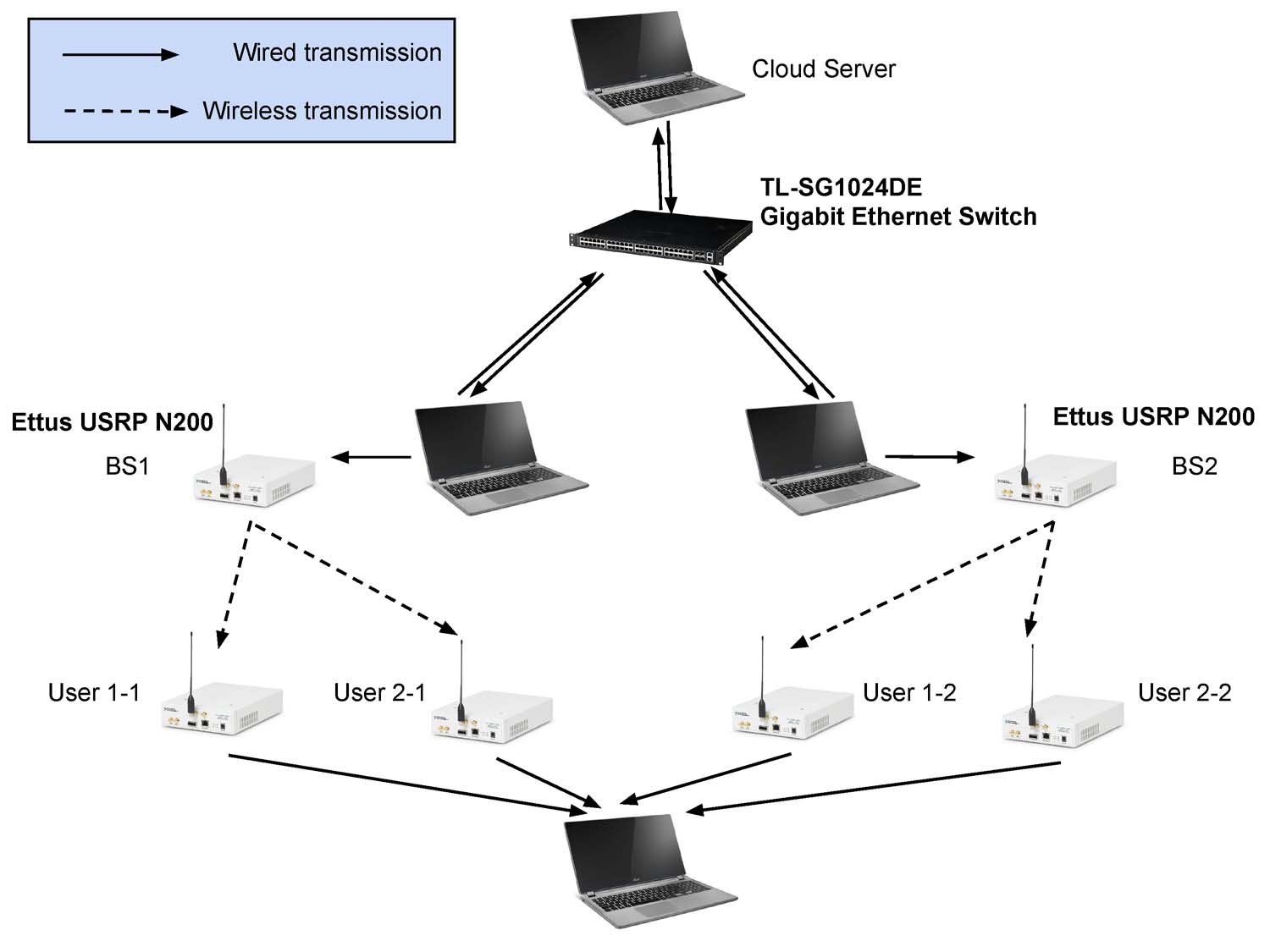We built a testbed (shown in the figure below) in our lab for experiments. It consists of 4 System76 laptops running Ubuntu linux 12.04LTS, 6 USRP N200 radios, each of which is equipped with an SBX Tx/Rx daughterboard and a VERT2450 dual-band (2.4-2.5 and 4.9-5.9 GHz) omni-directional antenna. Communications between BSs and the cloud server were supported by a TP-Link TL-SG1024DE switch. In this testbed, a laptop serves as the cloud server; running cloud-level optimizer and BS-level scheduler. two laptops are used to control operations of two radios that serve as BSs. Four radios are used to emulate four different users, which are all controlled by a single laptop. One laptop with four N200s are used to emulate signal receiving and packet processing of four different users. For the performance evaluation purpose, we configured the testbed with two MVNOs, each of which has 2 users. In the figure below, user 1-2 refers to user 2 of MVNO 1. In addition, we configured two BSs to work on two different channels on the 5GHz band respectively. We also implemented the proposed Radio-as-a-Service (RaaS) cloud framework, R-Cloud, on this testbed using GNU Radio and performed extensive experiments to evaluate its performance. The details about the testbed and R-Cloud implementation can be found in the following paper: C. Gao, G. Ozcan, J. Tang, M. C. Gursoy and W. Zhang, A cloud framework for enabling radio as a service over a wireless substrate, IEEE ICNP’2016. (PDF)
